Sar-e Pol-e Zahab
Q765582Sar-e Pol-e Zahab: town in Iran, known for five reliefs from the Lullubian and Parthian periods.
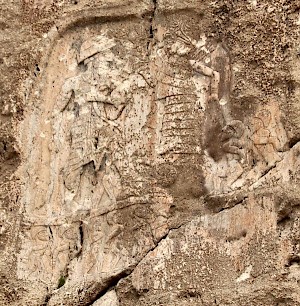
The kingdom of Lullubi, in the valley of the Diyala river, is mentioned several times in the cuneiform texts from ancient Iraq; the first references date to the third millennium BCE (Naram-Sin's famous Victory Stela in the Louvre), while the most recent texts belong to the Neo-Assyrian age.
Four heavily damaged reliefs showing Lullubian kings as conquerors can be found on the northeastern edge of modern Sar-e Pol-e Zahab, about twenty kilometer east of the border between Iraq and Iran.
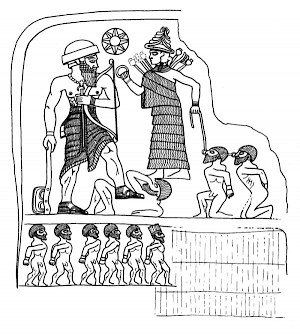
The four monuments are the oldest rock reliefs of Iran. They can be dated to c.2000 BCE, because one of the reliefs has an inscription that explains that the victorious ruler is called Anubanini, and this man is also known from sources from the Isin-Larsa period. The other three reliefs must date to about the same age. All reliefs show the king, facing right and holding a bow and a battle axe, standing on a defeated enemy; in the sky, symbols of the celestial deities can be seen. Except for relief four, the king faces a goddess, who can probably be identified with Inanna/Ištar.
On the Anubanini relief, the goddess holds two naked captives, which are tied to each other with ropes. Below the king and the deity, six other prisoners of war can be seen. This relief is the most interesting of quartet: not only because it is well-preserved, but also because it was the model of Darius' Behistun relief, which is about fifteen centuries younger.
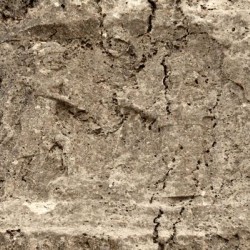 Sar-e Pol-e Zahab, Relief II |
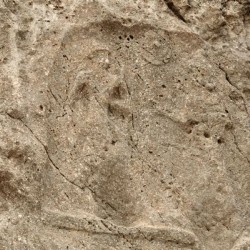 Sar-e Pol-e Zahab, Relief III |
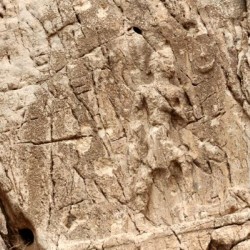 Sar-e Pol-e Zahab, Relief IV |
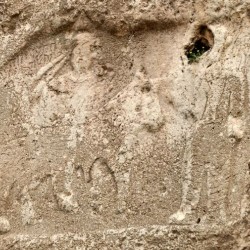 Sar-e Pol-e Zahab, Gotarzes relief |
Below the Anubanini relief, a fifth monument can be discerned: it dates back to the Parthian age and shows a king named Gotarzes, seated on a horse, and a man - perhaps a governor or a satrap - who appears to be saluting him. There were two Parthian kings with this name: Gotarzes I was a rebel who controlled large parts of the empire from 91 to 87 BCE, while Gotarzes II ruled from 39 to 51 CE. He is the more likely candidate: not only because he reigned thrice as long as his namesake and had more opportunity to order this relief, but also because he is known to have created a similar equestrian relief at Behistun (damaged beyond repair; more...).
The reliefs are easy to find: go to the place where the main road crosses the river and ask for the girls' school. From its playground, you will see both the Parthian and the Anubanini reliefs on the southwest face of a rock. The second, very worn relief can be found on the west face of the same rock. The other two reliefs are on the southwest and northeast faces of the rock across the river. A visit can easily be combined with Dukkan-e Daud; an additional reason for going there is the multi-decibel entertainment offered by dozens of enthusiastic Iranian girls seeing their first foreigner.
References
The reliefs are included as #1, #2, #3, #4, and #36 in Louis Vanden Berghe’s Reliefs rupestres de l’Iran ancien (1984). The drawing above is also from this book.